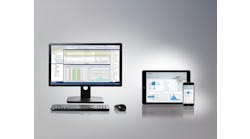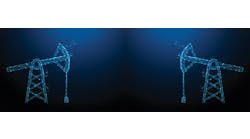This is the Part 1 in a five-part series about edge computing. Read:
- Part 2: Edge computing thrives in increasingly capable, embedded servers
- Part 3: Edge computing provides flexibility for mobile applications
- Part 4: How a data separation strategy to edge computing is effective for managing information
- Part 5: Six steps to implement effective edge computing
Go where the action is. Just as all politics is local, it's becoming obvious that the most effective use of today's powerful and inexpensive microprocessors and software is processing data on the plant floor and in the field.
Even though digitalization was supposed to push all information via the Industrial Internet of Things (IIoT) to cloud-computing services, its greatest beneficiary may be the humble sensors, instruments, analyzers, I/O and other hardware that generate all the data in first place. Oh sure, IIoT and the cloud will still get reports-by-exception and information for business/enterprise analysis, but the primary focus will be on operations and production, where it should have been all along. However, before you can go the edge and process data, you have to define what it is and where.
Eye of the beholder
Though it's popular to refer to plant floors and field applications as the "edge" because data and computing are supposedly no longer in the "center," these labels like so many are mostly a matter of perspective.
"The edge is being defined from different perspectives. For example, operations technologists may say it's where analog meets digital, while information technologists may say it's where the cloud meets on-premise computing," says John Vicente, CTO at Stratus Technologies. "I associate this edge discussion with what's happening in IIoT, but the broader edge discussion is about the continuing shift in computing models. Today’s edge is to cloud computing as personal computing was to mainframe computing. However, thanks to advancements in wireless communications and IoT, computing happens anywhere and from anything. Today, the edge is simply decentralized, distributed computing with greater computing power at lower costs. The edge is capable of handling latency, criticality and proximity issues with granularity and precision that cloud computing just can't offer."
Josh Eastburn, technical marketing director at Opto 22, agrees the edge is defined by who's talking. "For us, the edge is where real-world sensing and control signals come in, while those at cloud level think about the edge as the local area network (LAN)," says Eastburn. "The commonality is that data processing and storage are being distributed throughout the network. In the past, IT was at the office level, with a few PCs and databases in the plant, but now they're converging in industrial controllers and servers. The edge computing concept plays well into the infrastructure changes that are needed for IIoT. Typically, only big players can afford to rip and replace, but distributed processing makes it easier for IT and OT to come together, and do it securely."
Patchwork at the pilot
Unlike neater and tidier information technology (IT) realms or centralized control spaces, when computing resources move to the edge, they have to navigate the same crazy quilt of devices, networks and conflicting software that everyone encounters in the field or on the plant floor, and in legacy plants and pilot projects.
Mining company Northern Minerals and engineering procurement contractor (EPC) Sinosteel Corp. faced this challenge when they recently began developing Northern Minerals’ $56-million Browns Range heavy, rare-earth pilot plant about 160 km southeast of Halls Creek in northwest Australia. The project's three phases, including a three-year 60,000 tpa pilot plant producing 49,000 kg of dysprosium and 590,000 kg total rare earth oxide (TREO) per year; a feasibility study to minimize mining costs, improve productivity and increase ore reserves; and full-scale production based on the first two stages. However, the pilot plant had to be highly flexible, accommodate design changes even after commissioning, and quickly integrate devices and communication protocols from many suppliers.
To meet these requirements, Sinosteel selected ControlEdge IIoT-ready PLC and ControlEdge RTU cabinets from Honeywell Process Solutions, and accompanying control strategy and configuration, HMI design and commissioning support. Control Edge PLC has built-in cybersecurity, and supports OPC UA protocol and all common IEC 61131-3 programming languages, which enabled Sinosteel to integrate the pilot plant's disparate components and systems. The controller also uses Honeywell's Universal programmable I/O, which reduced required marshalling, and eased late design changes.
Sinosteel reports it had just two months to install the pilot's hardware and software and complete its factory acceptance test (FAT), and just three months for site commissioning. However, its capable PLC, RTU and I/O solutions let it finish on time in September 2018, and produce its first rare earth carbonate a month later. "This is an important project because it provides a new global source for dysprosium for making permanent magnets, electric motors and wind turbines," says Max Su, Sinosteel's site manager. "The flexibility and simplicity of the control solution was key to ensuring we met project requirements that could change by the day.”






